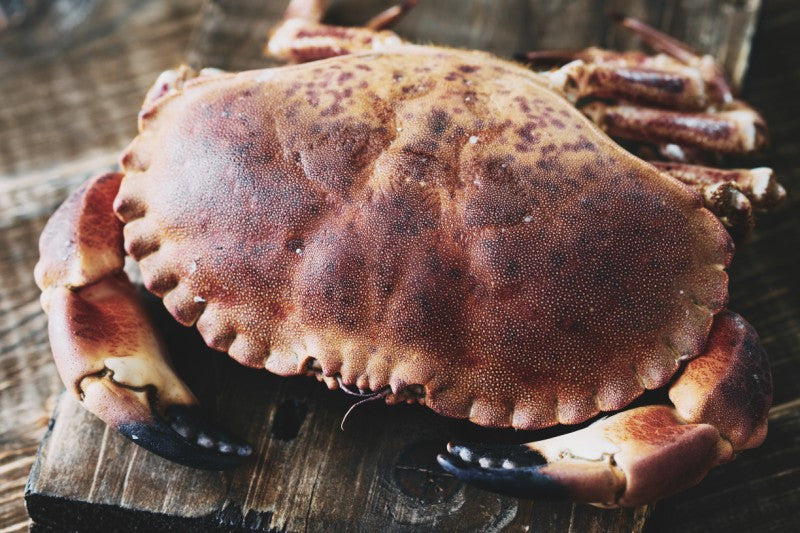
Crab: Edible Varieties of Crab and Nutritional Value
Share
Crab is a crustacean, the distinctive characteristic of which is its sideways walk. And, because it has five pairs of walking legs, it is called a decapod.
Crab as food is cheaper than lobster, but it is as tasty. There are over 4,000 varieties of crabs, but not all of them are edible. The most common edible crab varieties include:
Blue Crab
Often caught along the Atlantic coast, the blue crab stays true to its name -- it is blue-green. Moreover, its scientific name is Calinectes sapidus, which means beautiful swimmer. Its size ranges from 3 1/2 inches to 5 1/2 inches or more. It is typically steamed and served whole. Its blue-green colour turns to the traditional reddish colour when cooked.
King Crab
Also known as Alaskan King crab, Russian crab, and Japanese crab, its scientific name is Paralithodes camtschaticus. This variety of crab is not named king for nothing. It can weigh up to 25 pounds and can reach up to 10 feet in length. However, large it may be, only about one-fourth can be eaten, mainly its legs and claws. Its bright white meat is delicious, although you may have to use a cracker to be able to access it and taste it.
Dungeness Crab
Its scientific name is Cancer magister and is colour brown to purple. Although it can be bought all year round, it is mainly harvested from late fall to late spring. Weighing from 1 3/4 pounds to 4 pounds, it can feed two people. With its succulent and sweet meat, you can enjoy it even when it is just heated and served with just butter or dipping sauce.
Snow Crab
The scientific name of this species of crab is Chionoecetes opilio. It is commonly found in the northwest Atlantic Ocean and north Pacific Ocean. Its four walking legs and claw arm are usually sold in clusters. You can enjoy its sweet flavour without having to use any tools.
Health Benefits
Not only is crab delicious; it is healthy, too. For instance, it contains selenium, which is known for its antioxidant properties. It means it can help get rid of free radicals that damage your cells, thus preventing you from developing diseases, such as cancer. If you are diabetic, it may also be beneficial for you as it is high in chromium, a mineral that helps insulin metabolise sugar. Furthermore, it can be good for your bones because of its high phosphorous content.
Eating crab can be good for your heart as well. This is because it contains high levels of omega-3 fatty acids, which are considered essential fatty acids. Your body cannot produce them, so you had better get them from your diet. Besides helping keep your heart healthy, omega-3 fatty acids also have anti-inflammatory properties.
To sum up, although crab comes in several edible varieties, one conclusion can be made: its succulent meat and sweet flavour can indeed be a joy to have every now and then. It is also a great source of nutrients your body needs for optimal health.
